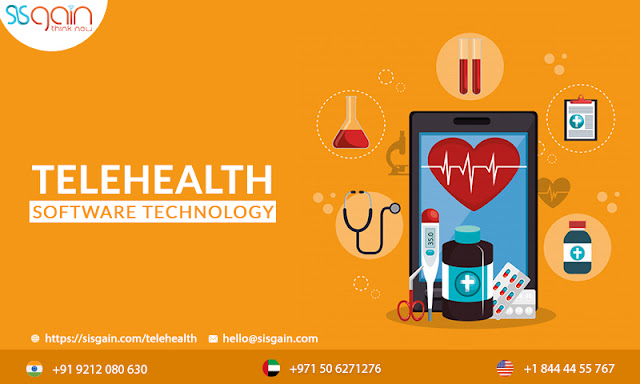Telehealth Software Market Rides The High Wave Amid Rapid Digitalization and Covid-19
When the Covid-19 pandemic was in its extreme form, the world’s healthcare system saw a change that they weren’t ready for. Telehealth software systems have entered to help the healthcare sector all over the world. Healthcare systems around the world were overburdened beyond their power, but on the other hand, for individuals, a regular doctor’s visit became difficult. With the pandemic cases seeing an unusual high every single day, patients had to look at other means to reach their doctors for treatments.
This different situation that the world hadn’t thought or prepared for, had made the way for Telehealth platforms.
While the adoption of digital health tools had already seen a rise before the pandemic, the honesty towards taking on telehealth software was an outcome no one saw coming. It is time we realize that this change was always across the border, waiting to occur. But, with this change, there is also a major need to look at new ways of working for a different set of providers, implement step-change growths in increasing access, information exchange, and integration of technology.
A few challenges that
telehealth software systems will face include workflow integration,
effectiveness when compared to the in-person visits, and security.
● There is a vast difference between the interest in telehealth and the actual use of telehealth for the common man.
● This is mainly due to the lack of knowledge of all the services, the knowledge on the care services that can be given virtually, understanding of safety coverage and refunds, together could increase this gap further.
But before we look at how telehealth app development services are bound to change the future, we must look at how it dealt with individuals when a pandemic was on. Its useful method during a pandemic can be observed in three points:
●
Offers care and diagnosis to a patient without a clinical
visit
●
Reduces the risk of exposure to the Covid-19 virus for
the staff and the patient
●
Decreases the requirement of Personal Protective
Equipment
But what can we believe when telehealth software systems are adopted at a fast speed?
Virtual care or virtually allowed healthcare solutions are sure to reach their full capacity, with more and more people using such services. These models have a continuous meeting with the individuals, that cater to various one-off urgent visits to building care models that provide the clinic experience virtually to rooting virtual care at home.
●
On-demand virtual care
The on-demand virtual urgent care is an alternative to urgent care visits, after-hours consultations, or emergency department visits. In the present day, these services are at the top of the offerings for various telehealth solutions. Telehealth allows patients to consult a doctor remotely to address timely and urgent concerns that can be dealt with, without visiting the emergency rooms.
●
Virtual office visits
Individuals visit and consult a formal healthcare provider for various purposes that could include the likes of primary care, behavioral health, or some specialty follow-up care. These tests or check-ups do not need any physical exams or other procedures. In these cases, a telehealth app development service lets patients have virtual office visits that include in-person care. This enables doctors to manage patients who suffer from severe conditions with remote patient monitoring.
●
Near virtual office visits
When it comes to testing, near-virtual office visits help the patients access care by mixing near home sites with virtual access to the doctor. The near virtual office visits will play an important role in being the turning point for telemedicine solutions.
●
Virtual home health
In virtual home health services, remote monitoring, and virtual visits help healthcare institutions offer help remotely. This also includes evaluation, education for the caregiver and patient, and physical therapy among other services. Through virtual home health services, one could improve the patient’s and caregiver’s experience, and improve connectivity with the care team.
●
Tech-led treatment administration
During a pandemic, it was important to help individuals accept the shift from having medicines in the hospital to having them at home. To make it easier, remote monitoring of patients was done, to manage symptoms.
Telehealth is the New Normal for the healthcare industry
Telehealth software systems has the power to provide important care across areas that face shortages of basic healthcare facilities. It is also effective in dealing with behavioral health, improving the patient experience, and significantly improving the outcomes. Moreover, the integration of telehealth solutions brings comfort and access care to patients where and when they need it. While healthcare is bound to become more creative with telehealth, its adoption in the post-pandemic era will mark a new beginning. One where mobile telehealth solutions become the new normal.
SISGAIN is one of the most reputed telehealth development companies which is working hard in the times of coronavirus. SISGAIN’s telehealth app development allows flexibility and convenience for both doctors and patients. The app also improves access for those people who are living in far places, less mobile, or with busy schedules.
Features of SISGAIN’s telehealth app development services include:
●
Improved patient experience and accessibility
●
Flexible working for doctors
●
Reduced pressure on busy waiting rooms
●
Reduced non-attendance
●
Secure and fully encrypted data solution






Comments
Post a Comment